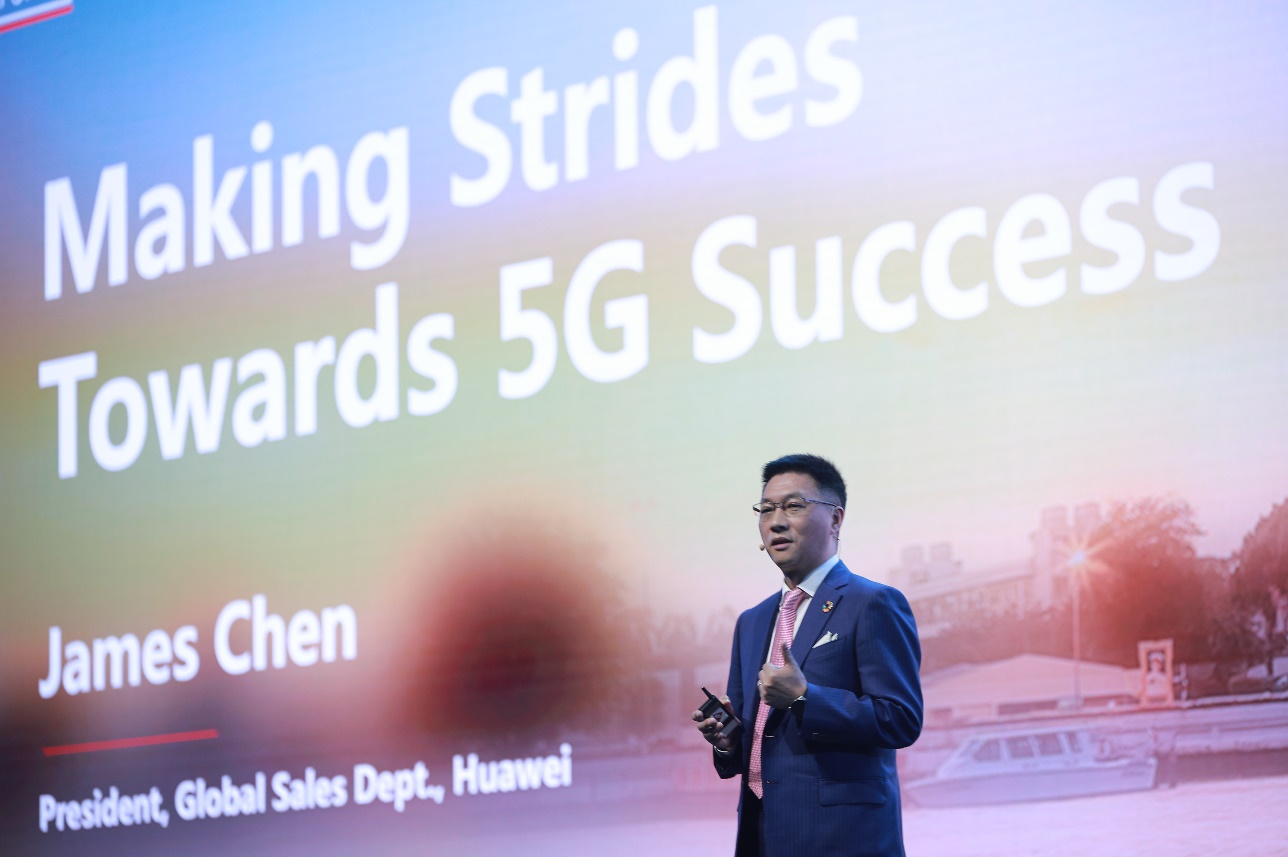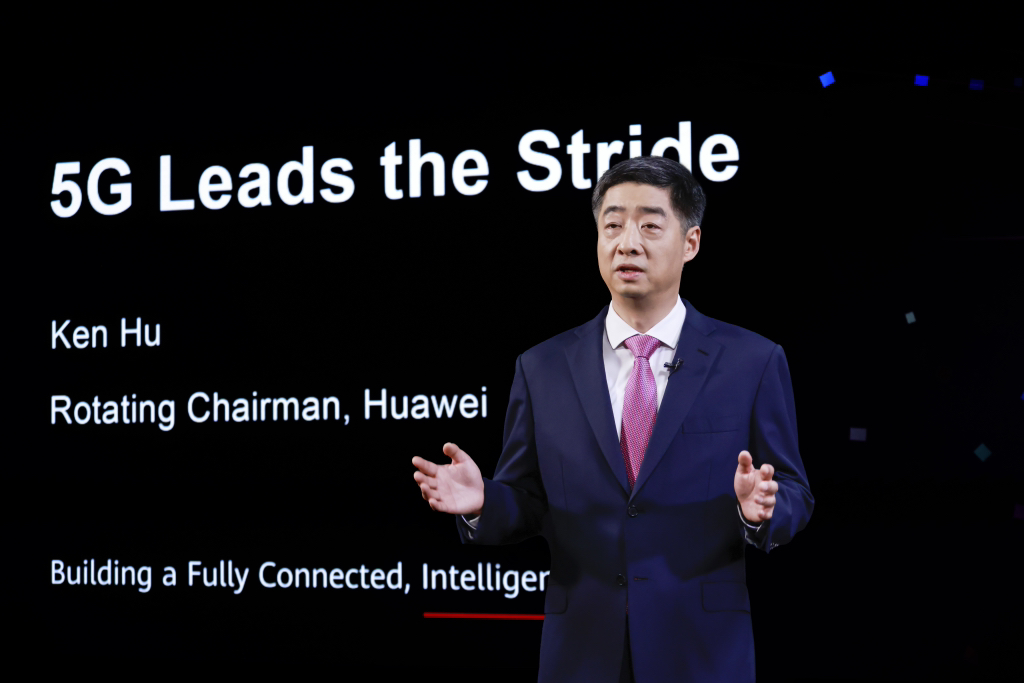Huawei’s 13th Global Mobile Broadband Forum (MBBF) kicked off in Bangkok today with a keynote from the company’s Rotating Chairman, Ken Hu.
“5G has grown faster than any previous generation of mobile technology,” began Hu. “In just three years, we’ve seen solid progress in network deployment, consumer services, and industry applications.”
“5G is in the fast lane,” he continued, “and we should all be proud of the progress we’ve made. But there’s more we can do to maximize its value. We need to work together to fully unleash the power of 5G networks and expand into services like cloud and system integration. Together, we can drive the development of 5G, new applications, and new growth in the ICT sector.”
As of October 2022, more than 230 carriers around the world have launched commercial 5G services. In total, the industry has set up over three million 5G base stations, serving more than 700 million subscribers.
In telecoms, consumer services still account for the bulk of carrier revenue. As 5G becomes more prevalent, its vastly superior experience is driving new shifts in consumer behavior, including a sharp rise in high-definition video traffic. New mobile applications that take advantage of 5G’s greater speeds and lower latency have doubled average user data consumption (DOU) and are increasing average revenue per user (ARPU) by 20%-40%, contributing to steady growth in carrier revenue from connectivity.
At the same time, B2B 5G applications are also becoming a new engine for carrier revenue growth, producing considerable value in industries like oil and gas, manufacturing, and transportation.
These applications are not only innovative – they’re generating real commercial value for carriers. In 2021, for example, Chinese carriers brought in over CNY3.4 billion (roughly USD500 million) in new revenue from more than 3,000 industrial 5G projects. What’s more, these projects also generated 10 times that amount from related data and integrated ICT services.
B2B 5G applications are poised to become the fastest growing revenue stream for carriers. 5G is enabling new service scenarios, applications, and business models, paving the way for unprecedented growth opportunities in the industry.
“To seize these opportunities,” said Hu, “there are a few things we need to do.”
Building out networks for better user experience
Beyond expanding coverage, networks should be built in a way that optimizes different types of user experience. For example, Chinese carriers have optimized their networks for TikTok and other popular video services, reducing first input delay by 50% and frame freeze by 90%. This much smoother video experience has doubled data consumption and is attracting new users to 5G services.
Driving the development of 5.5G
To push 5G to the next level, Huawei worked with carriers and industry partners to propose four features for 5.5G, the next evolution of 5G technology: 10 Gbps downlink, 1 Gbps uplink, support for 100 billion connections, and native intelligence.
“The industry needs to come together to define standards, prepare the spectrum, and build out the ecosystem,” said Hu.
Driving service innovation to maximize the value of 5G
With large bandwidth and low latency, 5G can be integrated with cloud and AI to provide entirely new services for consumers and businesses alike. Carriers can deliver new experiences like extended reality (XR), cloud gaming, and enriched calling services for individual consumers, and provide enterprises with more comprehensive digital transformation solutions. These open up new revenue streams, presenting an opportunity for carriers to go beyond connectivity and move into cloud services and system integration.
Industry digitalization is the next wave of global economic development. As a key enabler of digital transformation, 5G opens up a world of new opportunities. But the ICT ecosystem needs to work together to make the most of them. “If we work together, we can drive leapfrog development in 5G networks, applications, and the industry as a whole,” Hu concluded.
Network Resources Need to Be Maximized for 5G Commercial Success
James Chen, President of the Global Sales Dept of Huawei Carrier BG, also delivered a keynote entitled “Making Strides Towards 5G Success”. In his speech, Chen said, “We’ve seen fast progress in 5G. To fully unlock the value of 5G, we need to accelerate deployment, and make the most of every band, every hertz, and every watt. Together, we can take 5G from a leading brand and leading technology, to a leading experience and a leading business. And we can make 5G a commercial success.”
Chen described how 5G is driving industry development in many aspects. Compared with 4G, 5G networks are 10-times faster, delivering speeds greater than 1 Gbps. 5G users also consume two times more data than 4G users – more than 20 GB per month – and that amount is expected to keep growing. This creates huge opportunities for carriers in three areas: user experience, IoT, and industrial digitalization.
- User experience can generate more revenue than ever before, as carriers shift away from traffic-based business models. This can be achieved by offering 5G packages priced based on other factors like speed, latency, and uplink experience.
- IoT is also a booming market with a rapid growth in both consumer and industrial IoT services, which is expected to create 100 billion IoT connections.
- Finally, in industrial digitalization, 5G provides high-quality connections, and services like private lines and networks that are helping carriers expand into the B2B market. With 5G, carriers can diversify their portfolios beyond connectivity, and identify new sources of revenue.
At the end of MBBF, The 5G City White Paper and the first 5G Smart City in EEC was officially launched by National Telecom Public Company Limited(Thailand), Office of the National Digital Economy and Society Commission, Information and Communication Networks Public Company Limited and Huawei.
ONDE toke the lead to develop this 5G city whitepaper with the aim of providing guidelines on how to efficiently build a 5G City and integrate 5G technologies into people’s lives for a more sustainable future. In response to the national 5G committee policy and under this guidance, NT, Huawei, and industry partners are now in the process of building the first-ever EEC 5G city. By deploying 5G technology, the city can imply various smart service which will improve the city’s traffic management and data accessibility, raise the city’s security efficiency and improve air quality by monitoring PM2.5 level in real time.
The Global Mobile Broadband Forum 2022 is hosted by Huawei, together with its industry partners GSMA and GTI. This annual forum gathers mobile network carriers, vertical industry leaders, and ecosystem partners from around the world to discuss how to make 5G a commercial success and other hot topics like green development, intelligence, and 5G evolution. For more information, please visit: https://www.huawei.com/en/events/mbbf2022
Source: Carl Byoir & Associates

